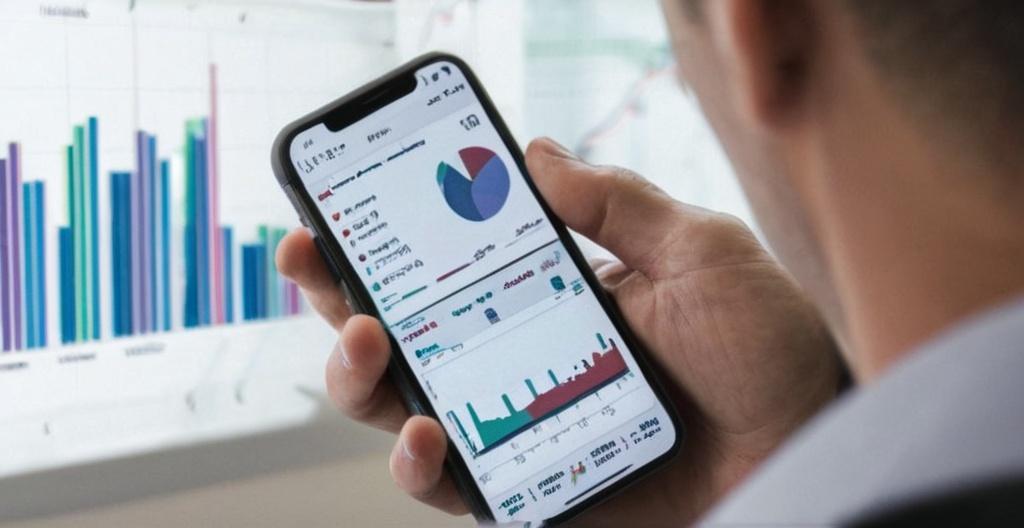Key Take Aways About Trading
- Trading charts visually represent price actions over time, helping predict future movements.
- Main chart types: Line (simple trend identification), Bar (detailed price data), Candlestick (visual cues on price changes).
- Key chart patterns: Triangles (trend continuation), Flags/Pennants (pause in trend), Head and Shoulders (trend reversal).
- Technical indicators: Moving Averages (trend identification), RSI (overbought/oversold), Bollinger Bands (price deviation).
- Charts are complex but essential for informed trading decisions; combine them with solid strategies and risk management.

Understanding Trading Charts
Alright, so you’ve decided to wade into the world of trading. You’ve probably seen one of those fancy charts with lines that zigzag all over the place, and you’re wondering what on earth is going on. Well, you’re not alone. Those charts might seem like a maze at first, but once you get the hang of it, they’ll become your best friends in trading.
Trading charts are visual representations of price actions over a specific time period. Think of them as the heartbeats of the markets, showing the pulse of trading activities. Traders use these charts to predict future price movements based on patterns and past data.
Types of Trading Charts
When it comes to trading charts, there are a few main types that traders commonly use. Each has its unique way of displaying data, and your choice will depend on your trading style.
Line Charts
Line charts are as straightforward as it gets. They plot a single, continuous line that connects a series of data points, usually closing prices. While they might not give you the whole picture, they can help in quickly identifying trends over time.
Bar Charts
Bar charts bring a little more detail to the table. Each bar displays the high, low, opening, and closing prices for a specific time period. The left horizontal line on the bar indicates the opening price, and the right line shows the closing price. The top and bottom of the bar represent the high and low prices, respectively.
Candlestick Charts
Ah, the candlestick chart – the bread and butter of most traders. These charts resemble bar charts but offer a more visually appealing structure. The “body” of each candlestick shows the opening and closing prices, while the “wicks” or “shadows” extend to the high and low prices. Candlesticks can also be colored to indicate whether the closing price was higher or lower than the opening price, providing immediate visual cues for traders.
Chart Patterns
Patterns are where trading gets a bit interesting. Traders study these patterns to forecast potential market movements. Think of it like cloud gazing, but instead of sheep or elephants, you’re identifying triangles, flags, and head-and-shoulders formations.
Triangles
Triangles are common on trading charts, forming as the price moves into a tighter range over time. Ascending triangles suggest an upward trend continuation, while descending triangles hint at further declines.
Flags and Pennants
Flags look like little rectangles and indicate a brief pause after a strong price move. They often suggest the market will continue in the same direction. Pennants are similar, but they form a small symmetrical triangle instead.
Head and Shoulders
This pattern is like a complicated handshake, but if you master it, you could avoid some trading slip-ups. The head and shoulders pattern signals a reversal of a trend, giving traders a chance to capitalize on swings.
Technical Analysis Indicators
Indicators are like the special effects in a trading movie. They don’t tell the future, but they sure make things clearer.
Moving Averages
Moving averages smooth out price data to help identify trends. There’s the simple moving average (SMA) that calculates the average price over a certain period, and the exponential moving average (EMA) that gives more weight to recent prices.
Relative Strength Index (RSI)
The RSI measures the speed and change of price movements and ranges from 0 to 100. An RSI above 70 might signal that a stock is overbought, while an RSI below 30 indicates it might be oversold.
Bollinger Bands
Bollinger Bands consist of a middle band (SMA) and two outer bands that chart the standard deviation of prices. When prices reach the upper band, the asset may be overbought. Conversely, touching the lower band might suggest oversold conditions.
My Personal Experience
I remember the first time I looked at a candlestick chart. It was like trying to decode an ancient language. But after implementing moving averages, suddenly those candles started telling stories. I still got it wrong sometimes, like betting on an ascending triangle without checking other indicators. Yep, that trade didn’t work in my favor. But hey, you live and learn. And maybe swear a bit at the screen.
Conclusion
Trading charts are complex yet indispensable tools for traders. By understanding different types, patterns, and indicators, you can make more informed decisions. Just remember, no chart can predict the future with certainty, so use them in conjunction with sound trading strategies and good risk management practices. Happy trading, and try not to bite your nails too much.
Child Pages
- Algorithmic Trading
- Arbitrage Trading
- Commodities Trading
- Copy Trading
- Cryptocurrency Trading
- Day Trading
- Forex Trading
- Futures Trading
- High-Frequency Trading (HFT)
- Momentum Trading
- News Trading
- Options Trading
- Pair Trading
- Position Trading
- Scalping
- Signal Trading
- Social Trading
- Spread Trading
- Swing Trading
- Value Investing (long-term trading style)
- Value Investing (long-term trading style)
- Value Investing (long-term trading style)